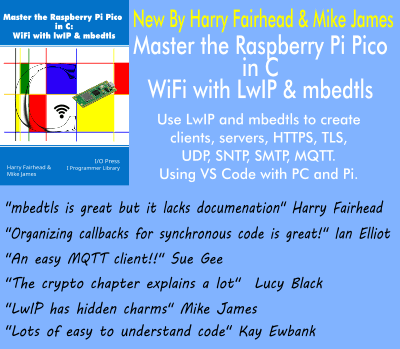| Ada Lovelace: Countess Of Computing |
| Written by Sue Gee | |||
| Tuesday, 14 October 2025 | |||
|
Today, October 14th, is Ada Lovelace Day with events around the globe taking place to raise the profile of women in science, technology, engineering and math. Although the date, the second Tuesday in October, isn't related to any events in Ada's life, it is a good time to discover, or revisit, her remarkable story. Ada Lovelace Day was founded by Suw Charman-Anderson in 2009 and aims to raise the profile of women in science, technology, engineering and maths by encouraging people around the world to talk about the women whose work they admire. With events coordinated by the Finding Ada website, it is an international day of celebration which helps people learn about the achievements of women in STEM, inspiring others and creating new role models for young and old alike. This year is the first since 2010 in which Finding Ada is not hosting the science cabaret, Ada Lovelace Day Live! but it does have details of other events. Finding Ada has certainly raised the profile of Ada Lovelace over the past decade and if you want to know about the life and legacy of this remarkable woman from the Victorian Era here's a You Tube video that is well worth viewing: As this video tells, Ada Lovelace was born Augusta Ada Byron in London on December 10, 1815 to the philandering Romantic poet Lord Byron and strictly religious Annabella Milbanke. Ada was Lord Byron’s only legitimate child but she was never allowed to meet him or even to know much about him. Luckily for us, her mother was interested in maths and science and moved in the same social circles as Charles Babbage, the polymath we consider "the father of computers". In an hour-long Open Univeristy BBC Documentary from 2015, also on You Tube, Calculating Ada - The Countess of Computing, mathematician and broadcaster Hannah Fry presents Ada story, focusing on her unlikely relationship with Babbage. At the start of the Industrial Era Babbage designed the world's first steam-powered computers - most famously the analytical engine and it was Ada who realised the full potential of these new machines. During her own lifetime, Ada was most famous for being the daughter of romantic poet Lord Byron ('mad, bad and dangerous to know'). It was only with the advent of modern computing that Ada's understanding of their flexibility and power (that they could be far more than mere number crunchers) was recognised as truly visionary. Hannah explores how Ada's unique inheritance - poetic imagination and rational logic - made her the ideal prophet of the digital age. To know more about Ada Lovelace and her association with Charles Babbage and his Analytical Engine and how she was the person to foresee what impact such technology could have, also read Ada Lovelace: The First Programmer, I Programmer's own account of her remarkable history. More InformationRelated ArticlesAda Lovelace, The First Programmer To be informed about new articles on I Programmer, sign up for our weekly newsletter, subscribe to the RSS feed and follow us on Twitter, Facebook or Linkedin.
Comments
or email your comment to: comments@i-programmer.info |
|||
| Last Updated ( Tuesday, 14 October 2025 ) |


